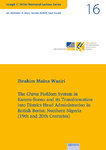Categories ASIENWISSENSCHAFT Reihe zur japanischen Literatur und Kultur Band 1: „Nach Einbruch der Dunkelheit“
Band 1: „Nach Einbruch der Dunkelheit“
Product no.: 978-3-86893-031-3
In stock
can be shipped within 3 days
24.80 €
Price incl. VAT, plus Shipping
We also recommend
* Prices incl. VAT, plus Shipping
Customers who bought this product also bought
|
|
|
|
|
|
|
* Prices incl. VAT, plus Shipping
Browse this category: Reihe zur japanischen Literatur und Kultur












































